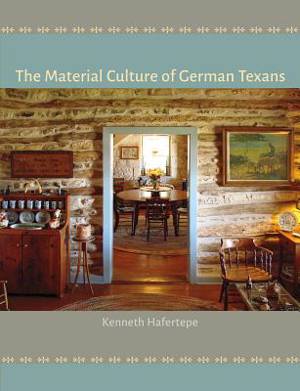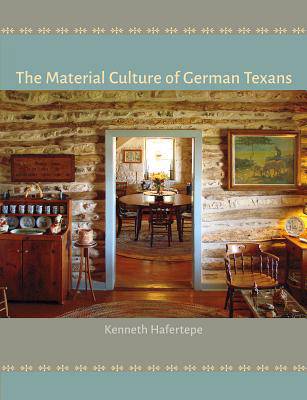
- Retrait gratuit dans votre magasin Club
- 7.000.000 titres dans notre catalogue
- Payer en toute sécurité
- Toujours un magasin près de chez vous
- Retrait gratuit dans votre magasin Club
- 7.000.000 titres dans notre catalogue
- Payer en toute sécurité
- Toujours un magasin près de chez vous
Description
Winner, 2019 San Antonio Conservation Society Foundation Book Award, sponsored by the San Antonio Conservation Society Foundation
German immigrants of the nineteenth century left a distinctive mark on the lifestyles and vernacular architecture of Texas. In this first comprehensive survey of the art and artifacts of German Texans, Kenneth Hafertepe explores how their material culture was influenced by their European roots, how it was adapted to everyday life in Texas, and how it changed over time--at different rates in different communities. The Material Culture of German Texans is about the struggle to become American while maintaining a distinctive cultural identity drawn from German heritage.
Including materials from rural, small town, and urban settings, this masterful study covers pioneer generations in East Texas and the Hill Country, but also follows the story into the Victorian era and the early twentieth century. Houses and their furnishings, churches and cemeteries, breweries and businesses, and paintings and engravings fill the pages of this thorough, informative, and richly illustrated volume.
Recent decades have seen a sharp increase of the study of vernacular architecture (which can range from traditional building to ethnic expressions to landscape ensembles) and an intensified study of American furniture and other decorative arts. Incorporating these vernacular and decorative arts methods and building on the works of cultural geographers, curators, and historians, The Material Culture of German Texans offers a definitive contribution that will inform visitors to the region as well as those who study its history and culture.
German immigrants of the nineteenth century left a distinctive mark on the lifestyles and vernacular architecture of Texas. In this first comprehensive survey of the art and artifacts of German Texans, Kenneth Hafertepe explores how their material culture was influenced by their European roots, how it was adapted to everyday life in Texas, and how it changed over time--at different rates in different communities. The Material Culture of German Texans is about the struggle to become American while maintaining a distinctive cultural identity drawn from German heritage.
Including materials from rural, small town, and urban settings, this masterful study covers pioneer generations in East Texas and the Hill Country, but also follows the story into the Victorian era and the early twentieth century. Houses and their furnishings, churches and cemeteries, breweries and businesses, and paintings and engravings fill the pages of this thorough, informative, and richly illustrated volume.
Recent decades have seen a sharp increase of the study of vernacular architecture (which can range from traditional building to ethnic expressions to landscape ensembles) and an intensified study of American furniture and other decorative arts. Incorporating these vernacular and decorative arts methods and building on the works of cultural geographers, curators, and historians, The Material Culture of German Texans offers a definitive contribution that will inform visitors to the region as well as those who study its history and culture.
Spécifications
Parties prenantes
- Auteur(s) :
- Editeur:
Contenu
- Nombre de pages :
- 416
- Langue:
- Anglais
Caractéristiques
- EAN:
- 9781623493820
- Date de parution :
- 21-06-16
- Format:
- Livre relié
- Format numérique:
- Genaaid
- Dimensions :
- 226 mm x 287 mm
- Poids :
- 2222 g







